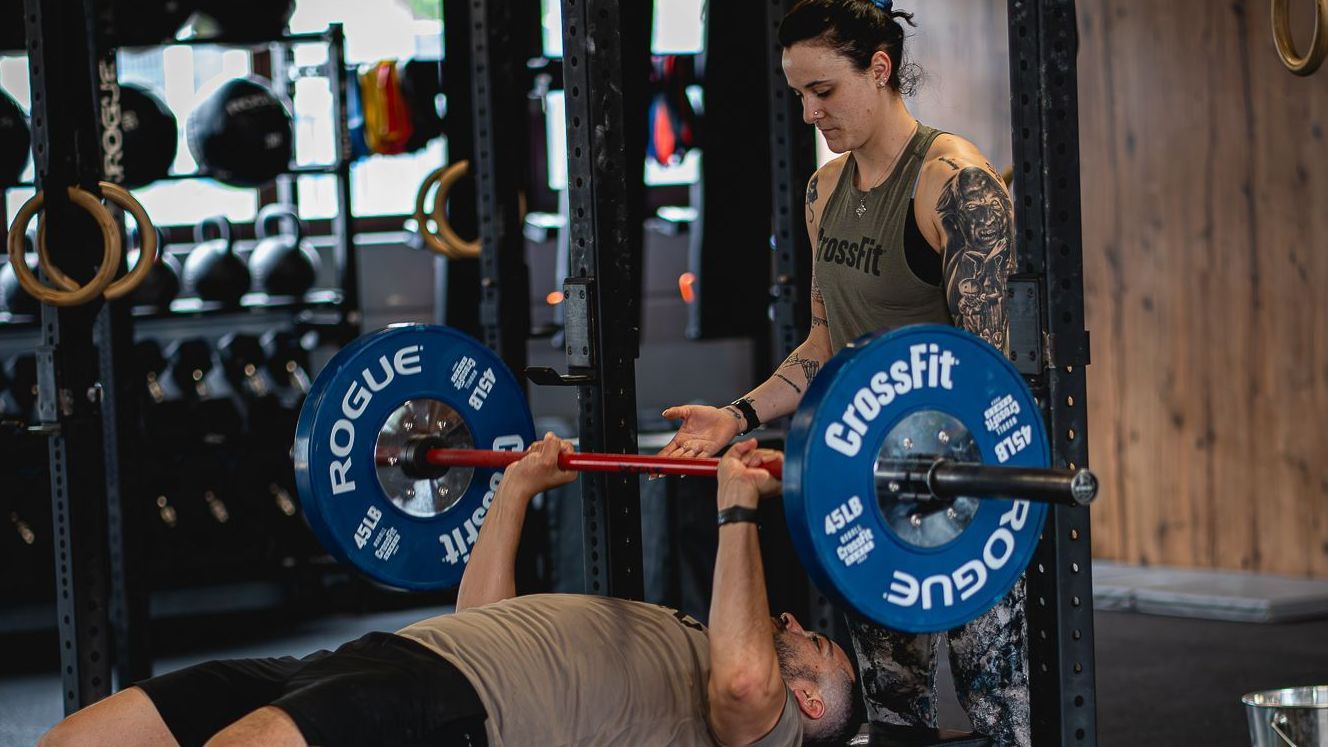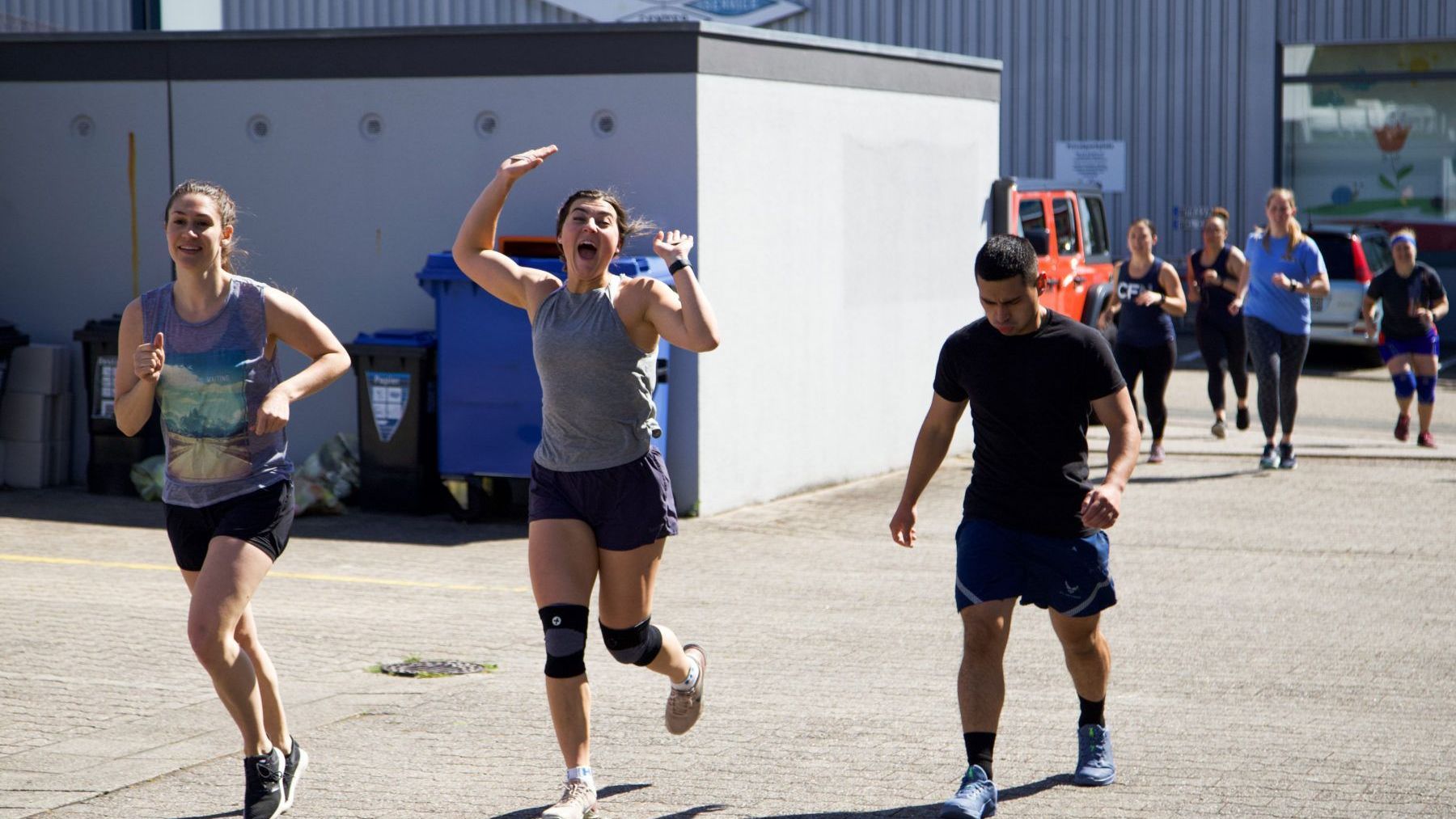BLOG
Discover our latest insights, updates, and stories on fitness, business growth, and community success designed to inspire and inform you.

These ancient words carry a timeless truth—and they feel especially relevant to what we’re building here at Teutonic. Every day, we witness people from all walks of life—military, CrossFitters, desk workers, average humans—take the courageous first step toward reclaiming their health. Some begin with virtuous movement. For others, it’s just movement, period. And that’s more than enough. We believe in preparing before the battle begins. That’s why we emphasize not just movement, but also the power of nutrition—because food is our foundation, our first defense, and our fuel. By combining mindful movement and nourishing habits, we honor Laozi’s wisdom: take care of your body before disease arrives, build strength before life demands it, choose health before you're forced to. This is the essence of longevity. This is the mission of Teutonic. And together, we’re rising to meet it—one step, one rep, one meal at a time. " Practice the art of small daily discomforts. Modern life is optimized for convenience and comfort. Your food can be delivered straight to your door. Your car seats can be heated. Your favorite show is available at the press of a button. We all enjoy convenience and comfort, myself included. But our bodies and souls yearn for challenge. We want to be stretched. A deeper satisfaction awaits after pushing yourself to learn a challenging concept or complete a humbling workout or have an important but difficult conversation. Should the whole day or everyday feel difficult? No. But a good day, a meaningful and fulfilling day, requires small moments of discomfort. Growth demands discomfort. We need something to push against to learn how strong we can become. "

CrossFit has revolutionized fitness by promoting a training methodology that is constantly varied, high-intensity, and functional. However, the current trend of combining strength training and metabolic conditioning (metcon) into a single one-hour session deviates from the original programming principles set forth by Greg Glassman. This approach not only misrepresents the CrossFit methodology but may also undermine the effectiveness of each training component. The Original CrossFit Prescription: One Workout per Day Greg Glassman, the founder of CrossFit, has long emphasized the importance of performing one workout per day. This is not just a suggestion but a core principle of his programming philosophy. In his 2002 article "Foundations" published in the CrossFit Journal, Glassman writes: "World-class, age-group strength and conditioning is obtainable through an hour a day six days per week of training" (medium.com). This reflects Glassman’s belief in a single, focused high-intensity session per day that is capable of developing world-class fitness. However, this does not imply that workouts should focus on just one modality. Instead, CrossFit programming is designed to address broad time and modal domains, meaning that workouts are varied across different time lengths (from short sprints to long endurance efforts) and across different types of physical activities (from strength training to gymnastics and cardiovascular work). In fact, variance is at the core of CrossFit. Glassman’s methodology emphasizes mixing different types of movements and time domains, which leads to more well-rounded and adaptive fitness. CrossFit.com, the official website for CrossFit programming, posts a single workout of the day (WOD) that typically combines a variety of modalities—strength, metcon, gymnastics, and endurance training—all within one workout. This programming method ensures that athletes develop general physical preparedness (GPP), training in a way that prepares them for a broad spectrum of physical tasks. Furthermore, in the CrossFit Journal article "A Theoretical Template for CrossFit's Programming," Glassman introduces the three-day-on, one-day-off cycle to allow for recovery and continued high-intensity training. He writes: "The three-day-on, one-day-off cycle ensures that the body is allowed sufficient recovery between sessions" (library.crossfit.com). The Science Behind Strength Training and Metcon Sequencing Research supports the notion that combining strength training and metcon into a single session can compromise the effectiveness of both components. Studies have shown that performing high-intensity endurance work (metcon) before strength training can reduce strength gains due to fatigue. In contrast, doing strength training before metcon can lead to decreased performance in the metcon portion because of accumulated fatigue. A study by McMaster et al. (2014) examined the effects of performing strength training and endurance work in the same session. They found that when endurance training was performed before strength training, there was a significant reduction in strength development due to fatigue. The authors concluded that "performing endurance exercise prior to strength training reduces strength outcomes" (McMaster, D. T., Gill, N. D., & Cronin, J. B., 2014, Journal of Strength and Conditioning Research, 28(3), 1281-1291). Similarly, a review by Laursen and Jenkins (2002) found that performing high-intensity interval training (HIIT) or metcon before strength training can impair strength outcomes. The study explains that the fatigue generated from intense endurance work "diminishes force production capacity" and negatively impacts the subsequent strength training session (Laursen, P. B., & Jenkins, D. G., 2002, Sports Medicine, 32(1), 53-73). These findings highlight that performing both strength and metcon in the same session without proper sequencing can reduce the effectiveness of each training modality. The Biological and Cellular Effects of Combining Strength and Metcon Biologically, combining strength training and metcon in the same session can lead to distinct effects on muscle tissue at the cellular level. The sequence of exercises and the intensity of each modality can influence muscle protein synthesis (MPS) and recovery processes, crucial for strength gains and muscular adaptations. Muscle Protein Synthesis (MPS) and Exercise Order Research has shown that the order in which exercises are performed can impact muscle protein synthesis. A study published in PLOS ONE found that performing endurance exercise before resistance training can impair the anabolic response to strength training. Specifically, muscle biopsies taken after a combined endurance and resistance training session showed reduced indicators of protein synthesis compared to resistance training alone: "Endurance exercise before resistance training reduces the muscle protein synthesis response to strength training" (journals.plos.org). On the other hand, performing strength training before endurance exercise may allow for a more pronounced anabolic response. Strength training generates mechanical tension and metabolic stress, key factors in muscle growth. However, performing metcon immediately after strength training can also reduce the performance and intensity of the strength session due to fatigue. Overtraining Syndrome and Cellular Stress Performing high-intensity strength and endurance training without sufficient recovery may lead to overtraining syndrome (OTS), a condition that disrupts muscle recovery and adaptation. At the cellular level, OTS can cause muscle protein turnover imbalances, mitochondrial dysfunction, and increased oxidative stress, all of which can hinder muscle recovery and growth. A review article published in ScienceDirect discusses how overtraining affects skeletal muscle, including changes in gene expression and protein synthesis pathways that can impair recovery and adaptation: "Overtraining syndrome disrupts muscle protein turnover, mitochondrial function, and gene expression, hindering recovery and adaptation" (sciencedirect.com). By combining strength and metcon without adequate recovery time between sessions, athletes increase the risk of overtraining, which compromises muscle recovery and overall performance. Teutonic CrossFit’s Commitment to the Original Methodology At Teutonic CrossFit, we firmly believe in adhering to the original CrossFit methodology. We recognize the importance of focusing on one workout per day, allowing for optimal intensity, focus, and recovery. By separating strength and metcon into distinct sessions, we ensure that athletes can perform each component at their highest potential. This method aligns with Glassman’s prescription of "one workout a day," which he states allows for better performance and reduced risk of overtraining. We program our classes with this principle in mind, allowing adequate time for recovery between different training modalities. Whether an athlete is focusing on strength or metcon on a given day, we ensure that each session is purposeful, high-intensity, and effective. Conclusion While the current trend of combining strength training and metcon into a single session has become popular, it deviates from the original CrossFit methodology. Greg Glassman’s philosophy of performing one workout per day—whether it is strength, metcon, or skill work—ensures that athletes can focus on each modality with the necessary intensity and recovery. Research supports this approach, demonstrating that combining strength and metcon without proper sequencing can lead to compromised performance and increased risk of overtraining. At Teutonic CrossFit, we prioritize the original methodology to provide our athletes with the best possible training experience. Our commitment to this approach allows athletes to maximize their potential and achieve long-term progress in a safe and sustainable manner. References McMaster, D. T., Gill, N. D., & Cronin, J. B. (2014). The effect of strength training on endurance performance in competitive cyclists: a systematic review. Journal of Strength and Conditioning Research, 28(3), 1281-1291. Laursen, P. B., & Jenkins, D. G. (2002). The scientific basis for high-intensity interval training: optimizing training programs and maximizing performance in highly trained endurance athletes. Sports Medicine, 32(1), 53-73. Meeusen, R., Duclos, M., Foster, C., Fry, A., Gleeson, M., & Nieman, D. (2013). Prevention, diagnosis, and treatment of the overtraining syndrome: joint consensus statement of the European College of Sport Science and the American College of Sports Medicine. Medicine & Science in Sports & Exercise, 45(1), 186-205. Sharp, M. A., Deuster, P. A., & Evans, R. K. (2022). Comparison of high-intensity functional training and traditional military physical training: effects on physical fitness and performance. Journal of Strength and Conditioning Research, 36(3), 663-672. PLOS ONE (2015). Endurance exercise before resistance training reduces muscle protein synthesis response to strength training. PLOS ONE. ScienceDirect (2020). Overtraining Syndrome and Cellular Stress: Effects on Skeletal Muscle and Recovery.

Clearing Up Misconceptions in CrossFit Injury Data — Featuring Dr. Amy West CrossFit has long been a lightning rod for debates about injury risk, but how much of the negative perception is grounded in fact? In the enlightening video “Clearing Up Misconceptions in CrossFit Injury Data” , Dr. Amy West — a sports medicine physician and experienced CrossFit athlete — sets the record straight by unpacking what the research actually says about injury rates in CrossFit. Breaking Down the Data Dr. West highlights that numerous peer-reviewed studies show injury rates in CrossFit are comparable to, or even lower than, those in other common sports and recreational activities, such as running, soccer, or basketball. Specifically, she points out research indicating an injury incidence of 2.1–3.1 injuries per 1,000 training hours in CrossFit — numbers on par with Olympic weightlifting and significantly below contact sports. Where Do Misconceptions Come From? A major reason CrossFit gets an unfair reputation, Dr. West explains, is the visibility of injuries when they do happen. Videos of mishaps or dramatic stories spread quickly online, fueling a perception of high risk. Yet these anecdotes don’t reflect the broader statistical reality. She also emphasizes that improper coaching, ego-driven training, and neglecting technique are leading factors in injuries — not the CrossFit methodology itself. When athletes progress responsibly under qualified coaches, the risk of injury drops significantly. Importance of Proper Progression One key takeaway Dr. West underscores is the necessity of scaling workouts appropriately and avoiding the temptation to exceed one’s skill or strength level. She encourages athletes to: Prioritize mechanics before intensity. Listen to their bodies and avoid pushing through pain. Seek out knowledgeable coaches who program intelligently and provide individualized guidance. A Call for Better Communication Finally, Dr. West challenges both medical professionals and fitness coaches to communicate more accurately about injury risks in CrossFit. Overstating the danger can discourage people from pursuing functional fitness — which, when practiced safely, offers immense benefits for health, longevity, and overall physical preparedness. Final Thoughts Dr. Amy West’s perspective is a refreshing reminder that evidence-based discussions should guide our understanding of injury risk in any sport. CrossFit, like any physical activity, carries some risk — but when done with attention to proper form, appropriate progression, and smart coaching, it is a safe and effective way to improve strength, conditioning, and resilience. So let’s move past the misconceptions and keep the conversation focused on facts, not fear. 👉 Watch the full video here: Clearing Up Misconceptions in CrossFit Injury Data (YouTube)





